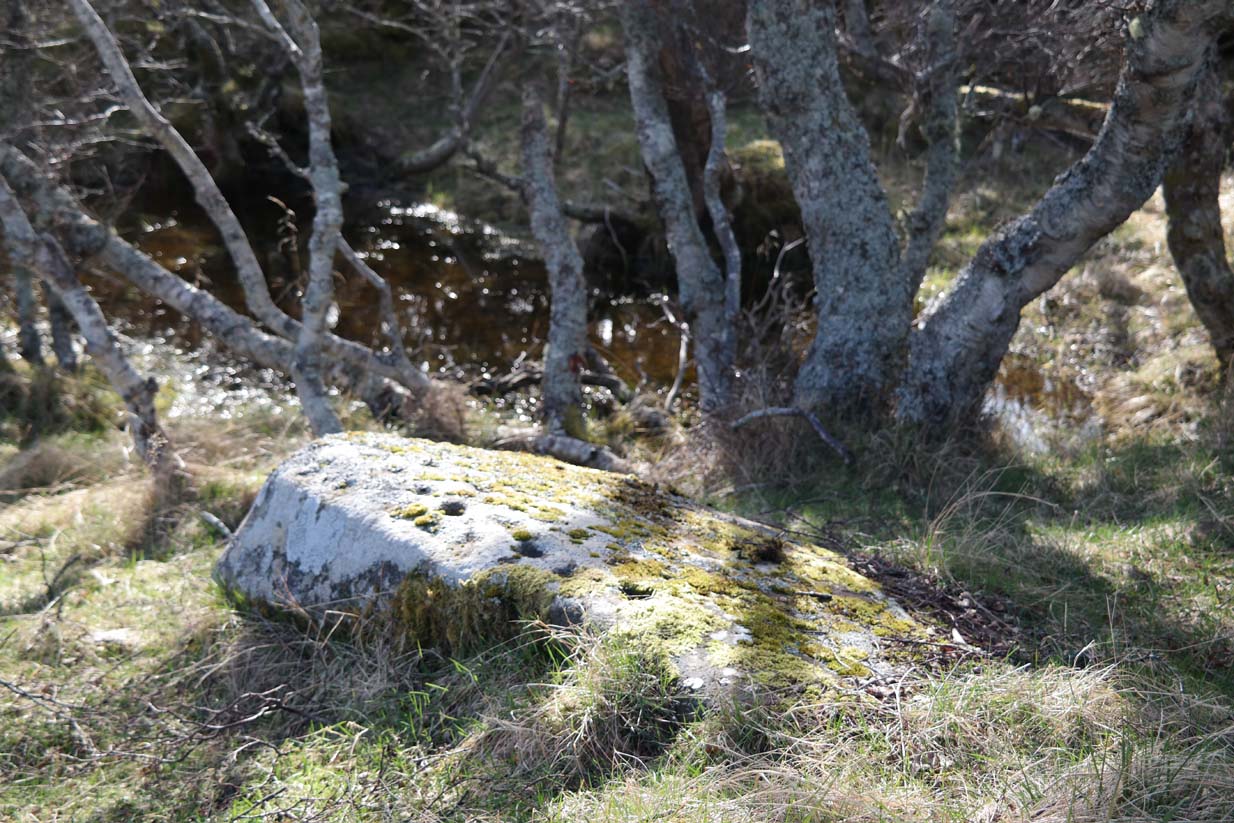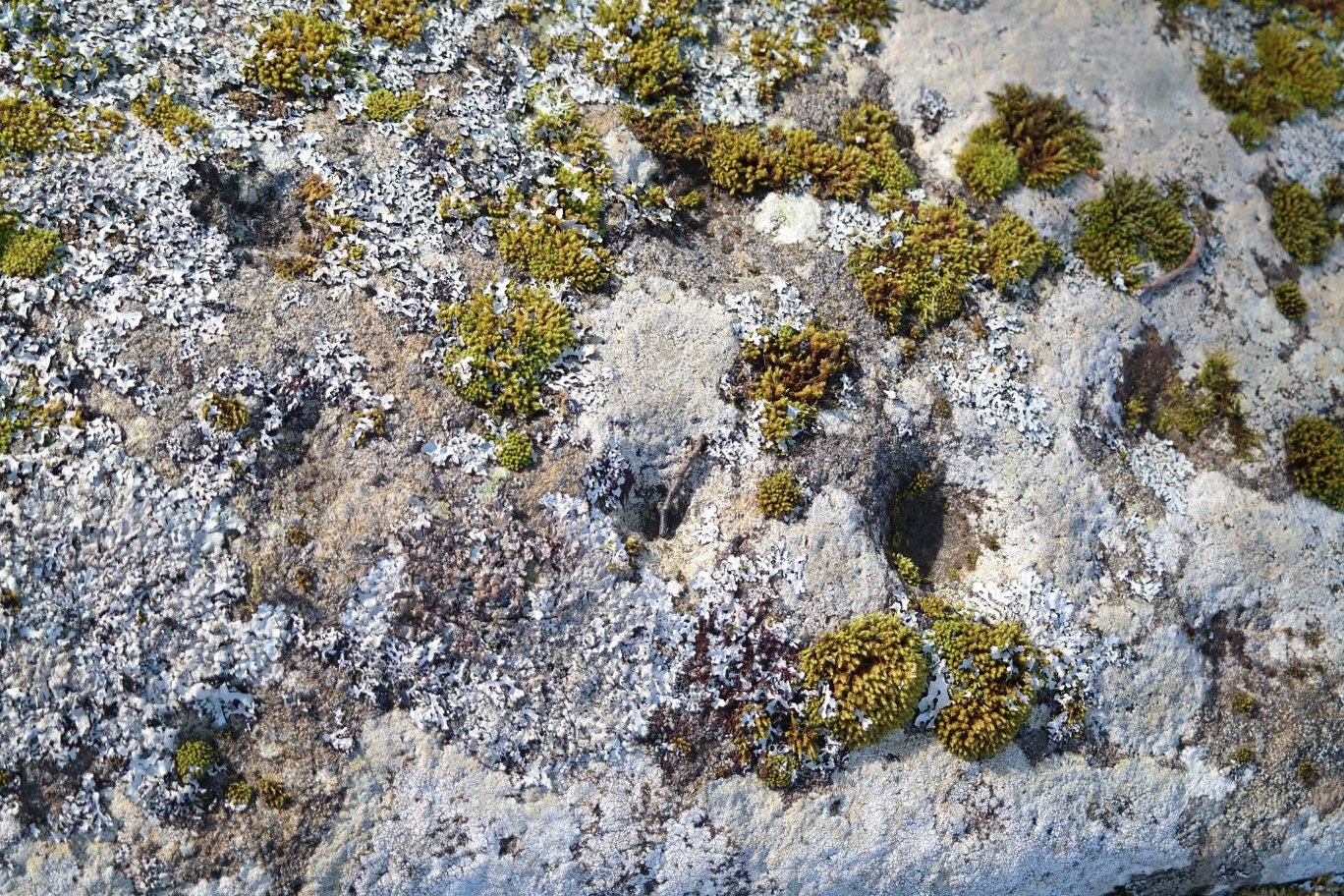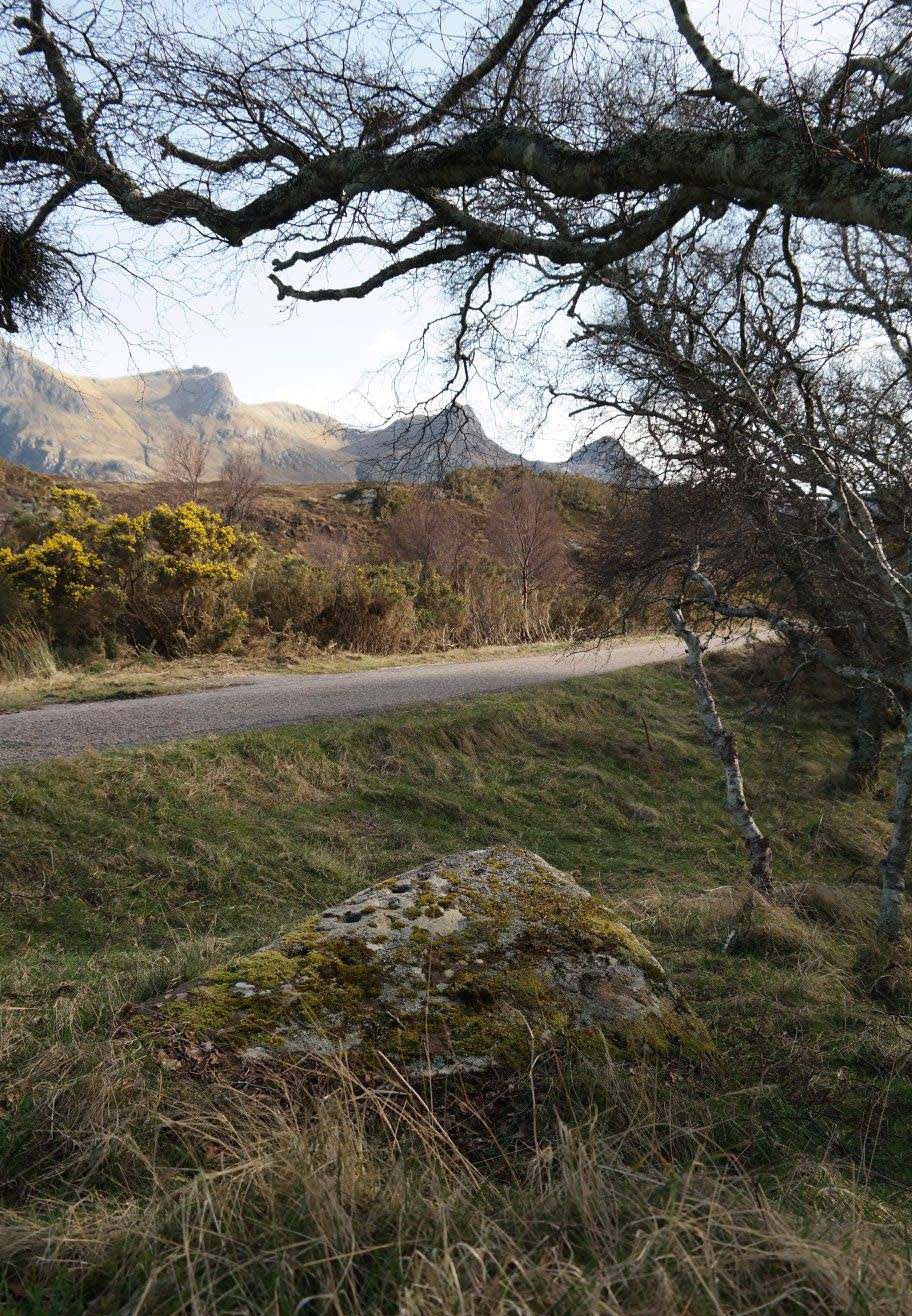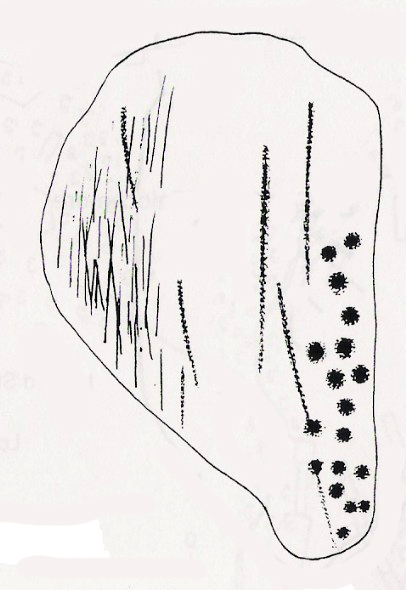Cup-Marked Stone: OS Grid Reference – NC 56201 52713
Also Known as:
- Canmore ID 5356
- Lochan Hakel A (Gourlay 1996)

Whether you take the A836 or A838 into Tongue (through truly beautiful wilderness), make sure you go into the village itself—and then keep going, south, along the tiny country road for 3 miles. Hereby, keep your eyes peeled for Lochan na Cuilce on your right; keep going past here, into and through the old trees where you’ll then see Lochan Hakel on your left. Keep going past here until your reach the next small copse on your right. Stop here. A small pool is yards into the trees and here you’ll see a single stone between that and the roadside. You can’t really miss it!
Archaeology & History

An apparently isolated cup-marked stone, some 3 feet by 5 feet, that was first described in Morrison’s (1883) meanderings amidst Sutherland’s awesome wilderness. It’s quite plain compared to Lochan Hakel 2 and many other carvings, simply consisting of 18 cups of various sizes, mainly on the eastern side of the rock. Sarah MacLean pointed out that a line running along the length of the stone seemed, in parts, to have been artificially enhanced by the hand of man, or woman. I have to agree with her.
The Royal Commission (1911) lads included this petroglyph in their superb survey of Sutherland, telling:
“On the W. side of the road to Kinloch, about ½ m. N of the bridge over the Kinloch River (Amhainn Ceann Locha), and on the N edge of a gravel pit close to the road, is a large earthfast boulder, 5′ in length as far as exposed, and 3′ 10″ in breadth, showing on its upper surface eighteen cup-marks of various depths, of which the most distinct is towards the N end of the stone, measuring about 3″ in diameter and 1″ in depth. The whole length of the stone is not visible, but the markings do not seem to extend to the portion covered…”


Simulacra lovers will love the form of this stone in relation to the background of the mountains, as its shape is echoed in that of the rising hills several miles to the south. …Of course, the depersonalizing ones amongst you lacking an understanding of animism would reject any such association due to your projection of disbelief. However—and equally—as we lack any ethnographic data on the carving we must also assume some caution…
A fascinating site – and one which is likely to have neighbours hidden in the surrounding moorlands…
References:
- Gourlay, Robert, Sutherland: An Archaeological Guide, Birlinn: Edinburgh 1996.
- Michell, John, Simulacra, Thames & Hudson: London 1979.
- Morrison, Hew, Tourist’s Guide to Sutherland and Caithness, D.H. Edwards: Brechin 1883.
- Royal Commission on Ancient & Historical Monuments, Scotland, Second report and inventory of monuments and constructions in the county of Sutherland, HMSO: Edinburgh 1911.
Acknowledgments: Huge thanks to Donna Murray for use of her photos in this site profile (aswell as for putting up with me whilst in the area); and also to Sarah MacLean for taking us to the carving in the first place. Many many thanks indeed. See y’ again soon, hopefully!
© Paul Bennett, The Northern Antiquarian
Watching rain drops, bubbles and concentric rings in puddles and seeing the escaping energy of bubbles bursting at the centre of concentric rings I thought cup and rings?
Couldn’t capture this in my photos so here’s a more professional image
https://www.dreamstime.com/royalty-free-stock-photography-rain-image24353297
I was pleased to think that here is another natural phenomenon which would be regarded with great significance by a neolithic culture immersed in a belief in “animation” and the interaction between the sky and earth.
Anyone else thinking along these lines? I could ramble on about drops from sky/heaven to earth/puddles, fluid/water, raindrop merging/absorbed, bubble burst/energy release, fusion/conception, living/animated,….. but you can get my drift.
I think there’s validity, in some cases (who knows which ones), in what you’re saying. …Although we have to get past the notion of our ancestors having a ‘belief’ in such animism.
Just as you’re sat there watching the implicit patterns in Nature appear before your senses, so such observations are merely that – and with it, sometimes, a creative edge seen and sensed and wondered-about elsewhere in the day-to-day lives of those folk of the endless outdoors. Such things were simply seen as part and parcel of life. The very notion of ‘belief’ even coming into existence, wasn’t quite there with these sortsa things… Much like today – when scientists and poets alike fall into the daydreaming of watching and just-being, from which emerge ideas, Eureka’s and development. Tis a wonderful thing indeed. <3
Hi, I agree with your view, if I have understood you correctly, but only as a starting point. I would take it further and say that we need to get past the notion that our ancestors were passive observers, with perhaps a foray now and then into creative expressions of their sensory experiences. After all social and cultural studies show that people around the world and throughout history repeatedly come up with “explanations” and systems of “belief” which relate to their experience of the world including the experience of life and death.
As you say living in the endless outdoors they would (after the basics of water, food, shelter and warmth were taken care of) have plenty of time to wonder about their world. This would include observing the sky, star patterns, the sun and moon and their movement in repeating cycles .As surely as day follows night, the year turns and seasons return the obvious observation would be that existence is cyclical! Surely someone (perhaps the children of every generation) would wonder and ask why? That starts attempts to interpret experience and perhaps the accumulation of wondering, ideas and explanations would become part of their culture as beliefs transmitted down the generations.
Sadly the modern western world seems to be adopting a linear 24/7/12 view of time which is gradually minimising the influence and significance of cyclical changes. I could go on about bipolarity with equal and opposite forces working in cycles of change, sun-moon, light-dark, hot-cold, solid-liquid etc etc. but could loose your interest. So I will finish with another non western thought. We see traits of family members reappearing in the next generation or even skipping a generation. Bodily characteristics, looks, hair and eye colour are obvious but we also make remarks on traits, for example your mother’s smile, your grandfather’s temper etc. The transmission of inherited traits and characteristics through the DNA of parents to offspring explains this for us. Without that knowledge but with the experience of cyclical change perhaps thoughts turn naturally to reincarnation?
In a world of cyclical changes reincarnation would be the return of the essence or soul of an ancestor as an animating spirit reborn in a new body. So I return to my hypothesis that there is a case for a belief in animism or life force embodied in otherwise inanimate matter. It leads me to all sorts of entertaining speculation!